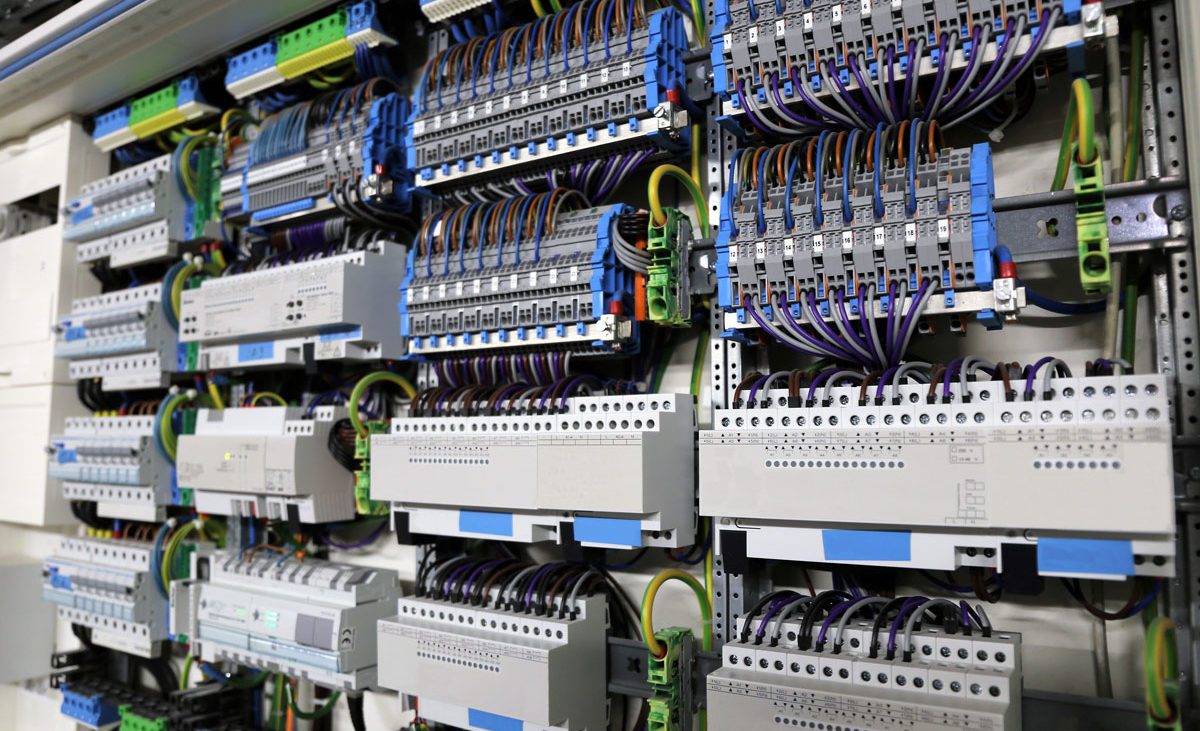Trusted Electrical Design Services for Residential Constructions and Renovations
Trusted Electrical Design Services for Residential Constructions and Renovations
Blog Article
Cutting-edge Electrical Design Services for Modern Framework
The evolution of contemporary facilities demands cutting-edge electric design solutions that not just enhance operational effectiveness however likewise address sustainability obstacles. As city settings grow increasingly complex, incorporating innovations such as wise grids and renewable energy resources becomes critical. These developments not just promise to enhance energy usage yet likewise foster strength versus future needs. The landscape of electric design is undergoing rapid improvement, motivating a closer examination of emerging patterns and their implications for long-term framework viability. What might the future hold for those that accept these cutting-edge approaches?
Value of Ingenious Electrical Design
Ingenious electrical design plays a critical function in modern facilities, influencing not only performance however likewise sustainability. As cities evolve and the demand for power boosts, the requirement for innovative electrical systems ends up being vital. These systems should not just satisfy present needs but likewise anticipate future development and technological advancements.
A well-executed electric design can significantly lower power usage, therefore decreasing functional expenses and lessening environmental impact. By including sustainable energy resources, such as photovoltaic panels and wind turbines, innovative designs can boost power independence and strength. Smart grid technologies enable for real-time surveillance and management of energy distribution, optimizing efficiency and minimizing waste.
Security is an additional important facet of electrical design. Implementing extensive requirements and innovative technologies can reduce dangers connected with electrical failings, ensuring a protected atmosphere for locals and organizations alike. Additionally, ingenious styles assist in versatility, enabling infrastructures to incorporate arising innovations perfectly.
Key Trends in Electric Design
As the landscape of electrical design continues to evolve, a number of essential fads are forming the future of the market. One considerable fad is the combination of smart modern technology right into electrical systems. The spreading of the Net of Points (IoT) has made it possible for real-time tracking and control of electric tools, improving effectiveness and assisting in predictive maintenance.
Another fad is the expanding emphasis on modular design. This approach enables adaptable and scalable solutions, making it possible for facilities to adapt to changing demands without substantial remodellings. Furthermore, making use of sophisticated simulation tools and Building Details Modeling (BIM) is ending up being progressively widespread, streamlining the design process and boosting collaboration amongst stakeholders.
Additionally, innovations in products science are causing the development of lighter, more durable, and energy-efficient elements. This development is particularly vital for high-performance structures and facilities projects.
Finally, there is a marked shift towards data-driven decision-making - industrial electrical design. Leveraging data analytics aids developers enhance systems for efficiency and cost-effectiveness. Together, these patterns indicate a transformative period in electrical design, improving functionality, sustainability, and resilience in modern-day facilities
Lasting Power Solutions
Lasting energy remedies are increasingly becoming an important emphasis in electric design, reflecting a more comprehensive dedication to environmental duty and resource efficiency. These remedies aim to decrease ecological influence while maximizing energy intake in various infrastructures, from household buildings to large commercial facilities.
One of the leading techniques involves the integration of renewable energy resources, such as solar panels and wind turbines, right into electrical systems. This not only decreases dependence on nonrenewable fuel sources however additionally enhances power resilience. In addition, innovative power storage space systems, such as sophisticated batteries, enable effective administration and distribution of energy, ensuring that excess energy produced throughout optimal manufacturing can be utilized during high demand periods.
Moreover, energy-efficient design methods are being embraced to boost general system efficiency. This includes using energy-efficient illumination, cooling and heating systems, and clever structure technologies that adapt and keep an eye on energy usage based on occupancy and ecological problems.
Smart Grid Technologies
The implementation of sustainable energy solutions normally causes the exploration of wise grid technologies, which play a critical function in modernizing electrical systems. Smart grids utilize progressed communication modern technologies and information analytics to boost the integrity, effectiveness, and sustainability of electrical energy circulation. By integrating digital innovation with standard grid infrastructure, these systems assist in real-time monitoring, automated control, and improved decision-making abilities.
One of the crucial features of clever grids is their capacity to fit renewable resource sources, such as solar and wind power. This versatility not just reduces reliance on nonrenewable fuel sources but likewise enables a more decentralized energy production design. Moreover, clever grids enable demand feedback programs, where consumers can adjust their energy use based upon real-time rates, therefore advertising power conservation and minimizing peak tons needs.
Furthermore, clever grid innovations boost grid resilience by making it possible for quicker recognition and resolution of failures, inevitably decreasing downtime. With anticipating upkeep and analytics, utilities can enhance and optimize procedures service distribution. As cities and neighborhoods proceed to develop, smart grid technologies are necessary for building a sustainable and reliable electric framework that meets the demands of modern-day society.

Future-Proofing Infrastructure
To ensure long-lasting feasibility and flexibility, future-proofing facilities is necessary in the rapidly evolving landscape of electrical design services. As technology developments and power demands change, it is vital that electric systems are made with flexibility in mind. This involves integrating scalable remedies that can accommodate future upgrades industrial electrical design without requiring comprehensive overhauls.

Additionally, sustainability should be a cornerstone of future-proofed styles. Making use of renewable energy sources, such as solar and wind, and optimizing power efficiency minimize dependency on fossil fuels, lining up with global initiatives to fight climate adjustment.
Final Thought
In final thought, ingenious electrical design services play a pivotal duty fit contemporary framework. By focusing on flexibility, efficiency, and sustainability, these solutions address the progressing demands of power systems. The assimilation of wise grid technologies and lasting power options enhances strength and decreases functional prices. Future-proofing facilities via sophisticated simulation tools and modular methods makes sure that electrical systems remain receptive to altering requirements, ultimately adding to a much more energy-independent and lasting future.
A well-executed electric design can considerably lower power consumption, thereby reducing operational prices and lessening environmental impact. By integrating sustainable energy sources, such as solar panels and wind turbines, innovative styles can boost power freedom and strength. In addition, innovative power storage systems, such as innovative batteries, make it possible for efficient monitoring and circulation of energy, guaranteeing that surplus energy produced throughout top manufacturing can be used throughout high demand periods.
Clever grids enable demand reaction programs, where customers can readjust their energy use based on real-time pricing, thus advertising energy conservation and decreasing peak lots demands. (electrical load calculation)
As innovation advances and power demands change, it is important that electric systems are created with flexibility in mind.
Report this page